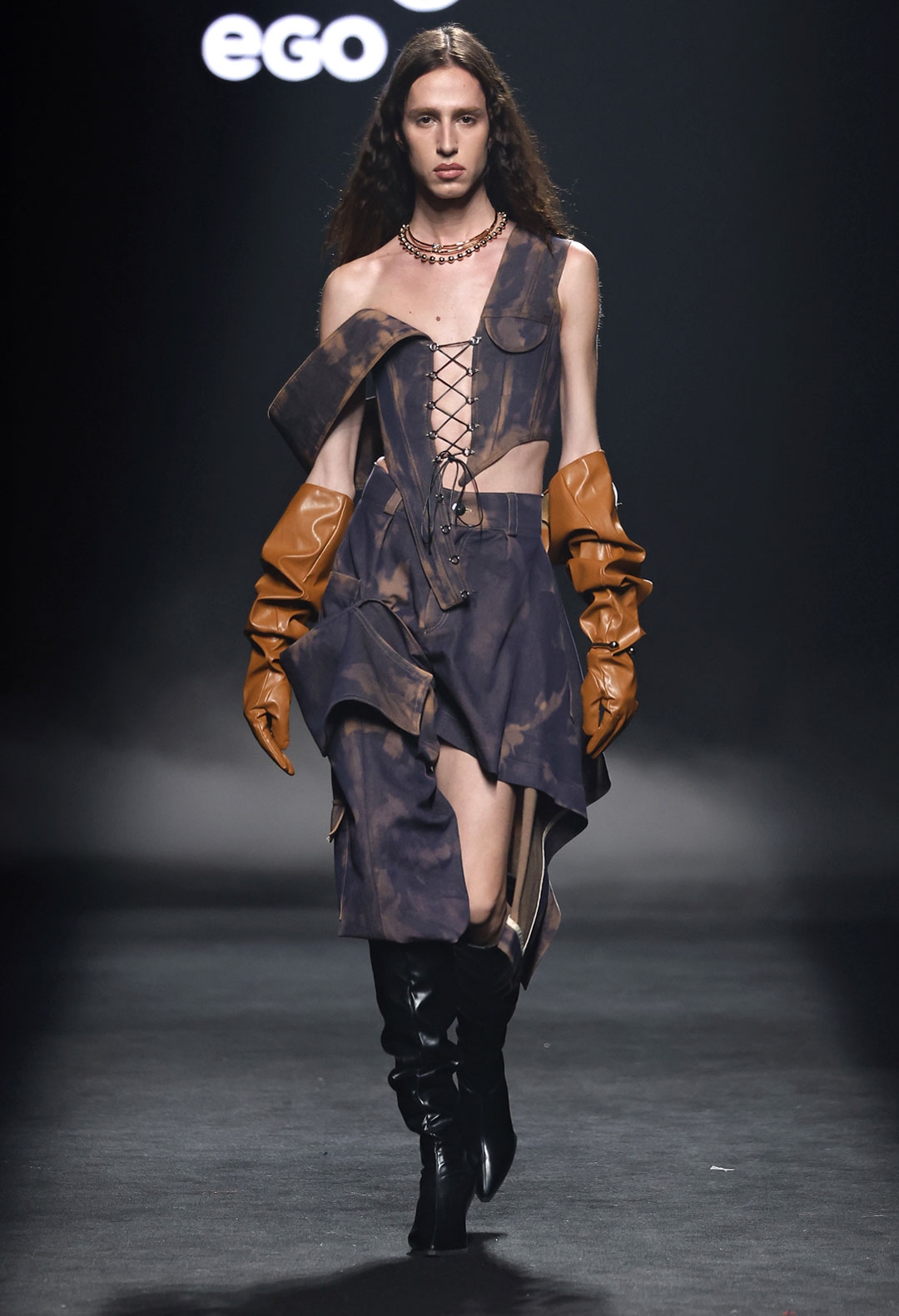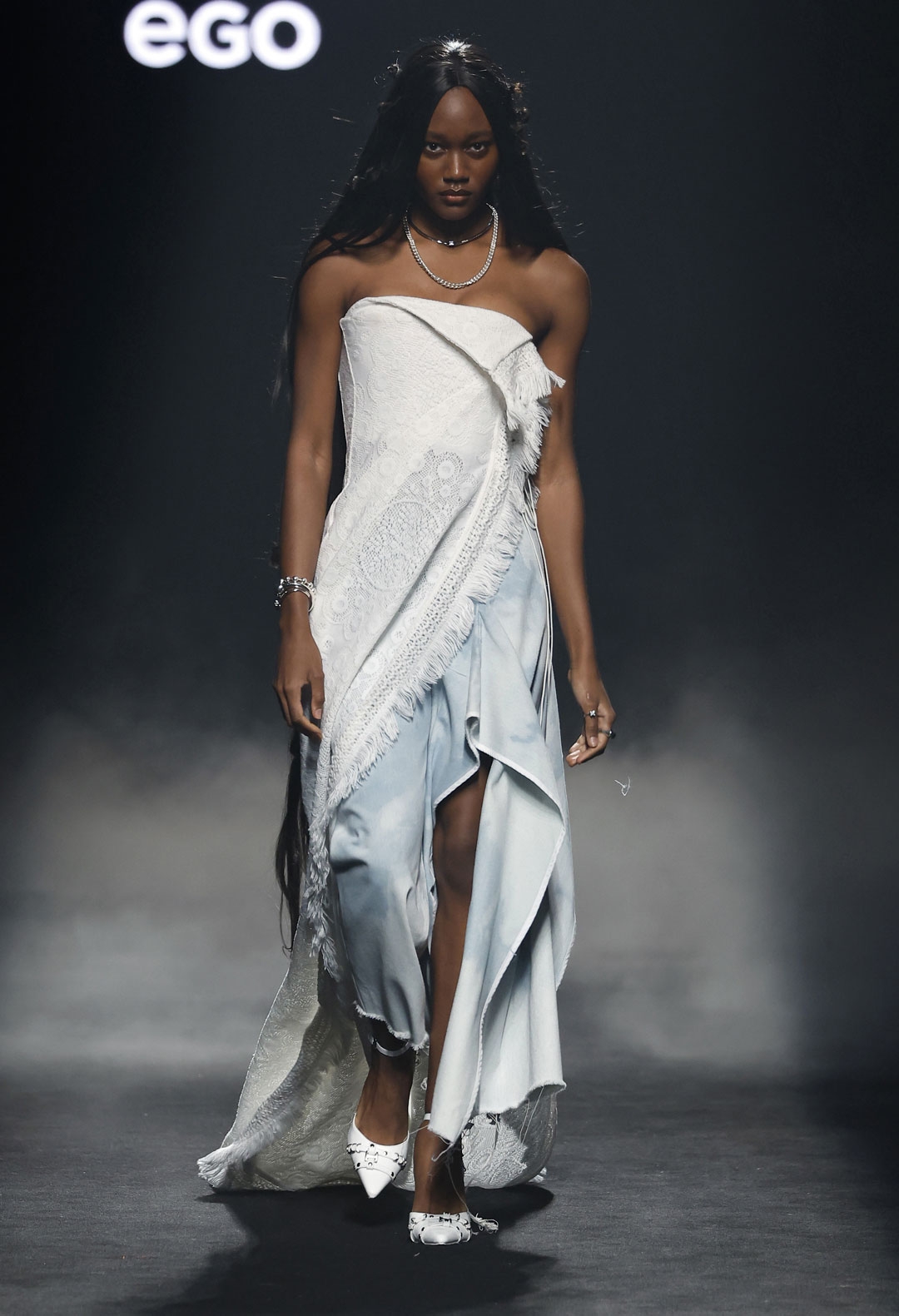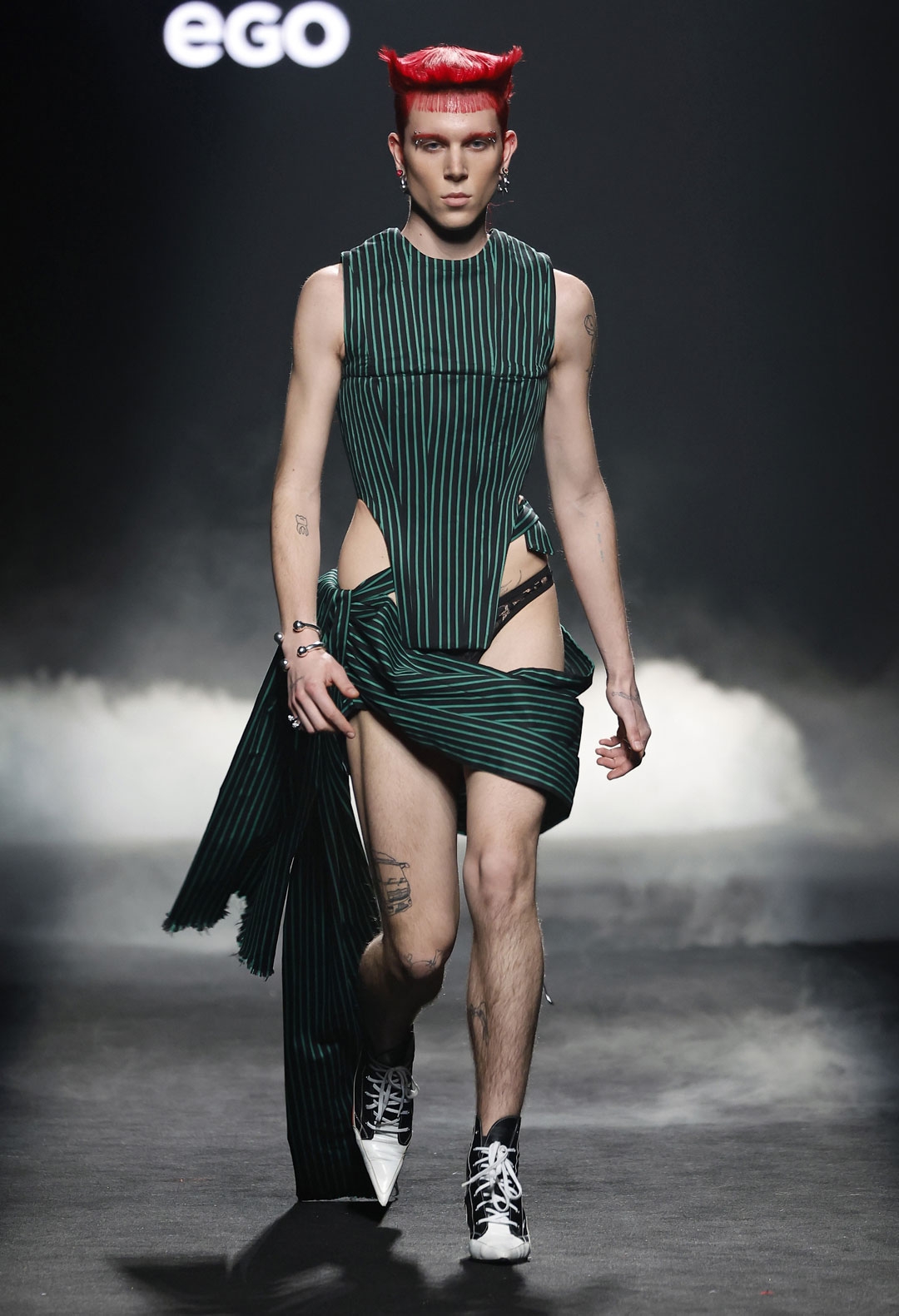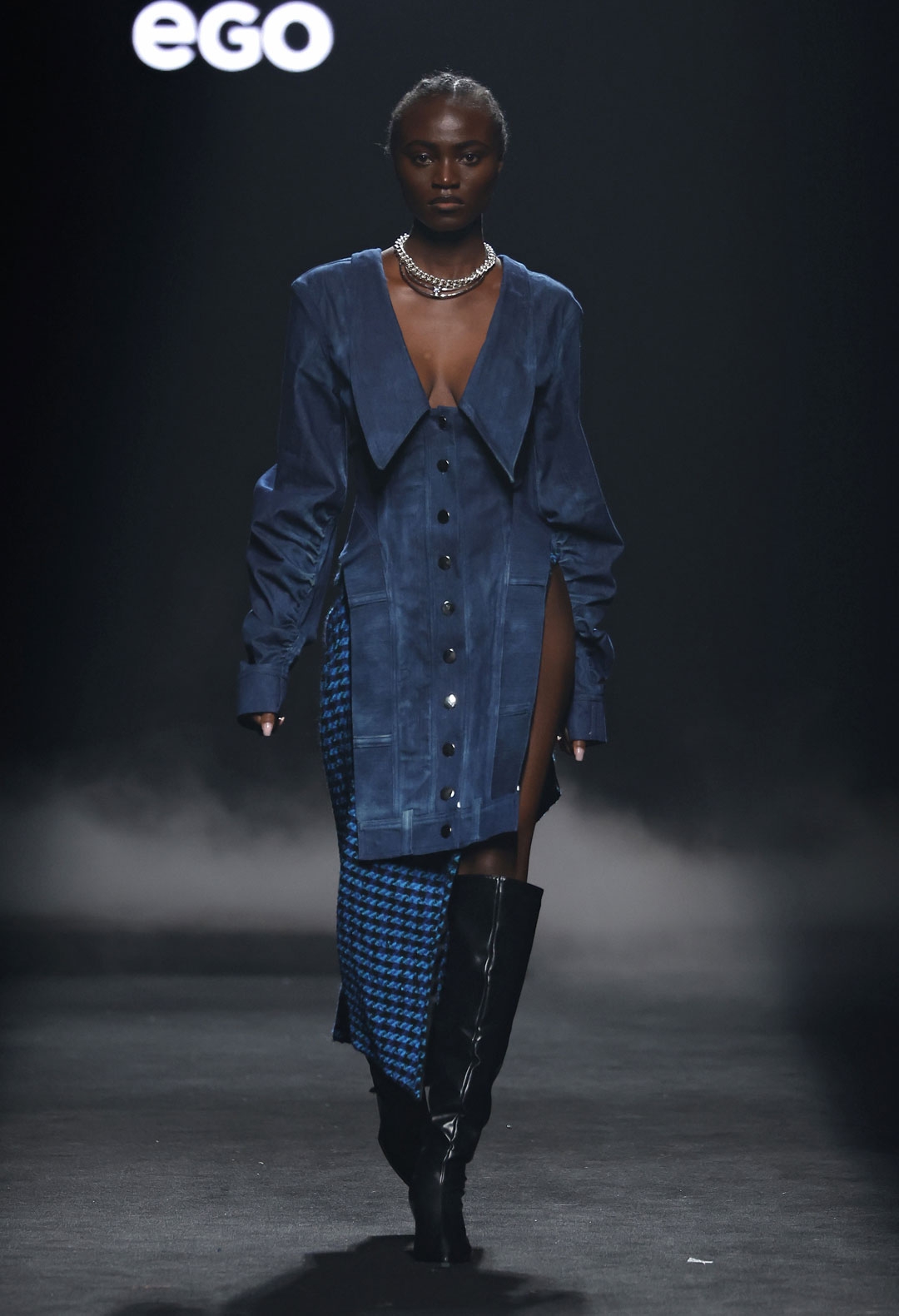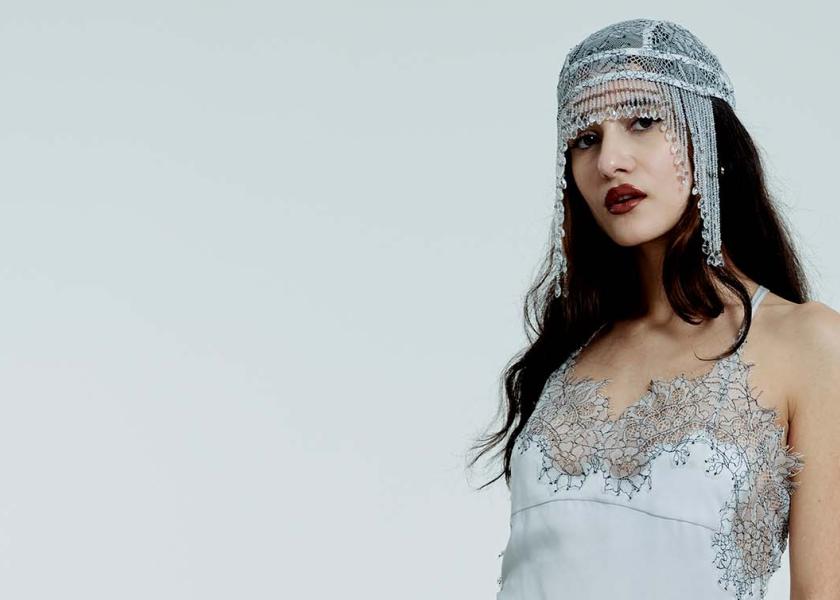Peter Sposito
Perfect imperfection
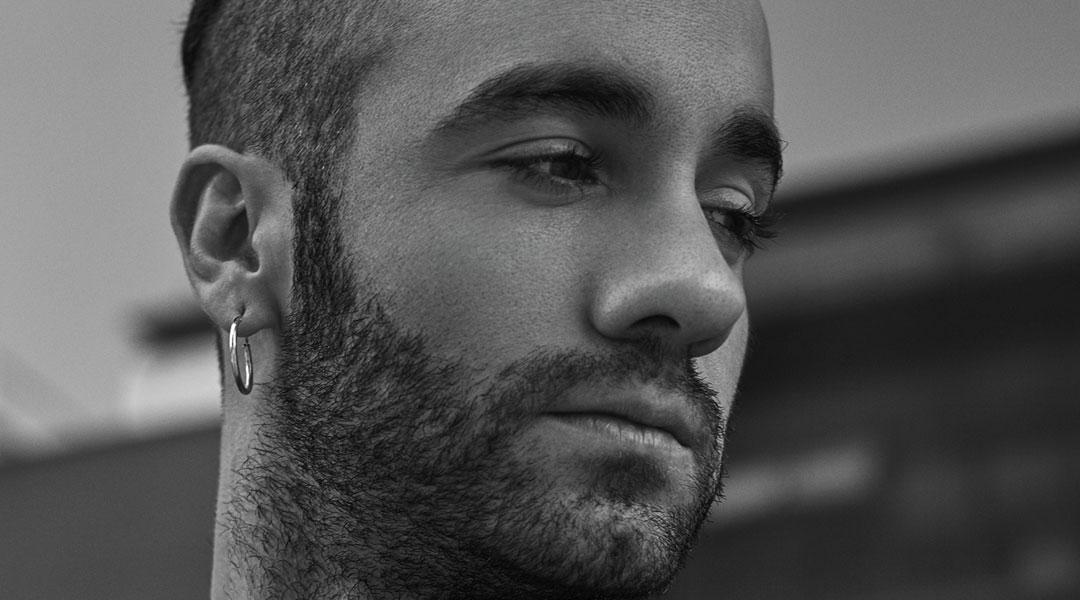
Pedro González tends towards perfectionism, but his ‘alter ego,’ Peter Sposito, pushes him towards imperfection. Two souls coexist in the mind of this designer who received the Mercedes-Benz Fashion Talent Award last year. His undeniable identity, where historicism is blended with urban style, won him an award that lauded him as an emerging talent in Spanish fashion and allowed him to travel to Mexico to launch his collection: ‘RTW Couture.’
With a collection inspired by his childhood, which he spent on the streets of a little village in the north of the province of Zamora, Peter Sposito, the alter ego of Pedro González (San Cristóbal de Entreviñas, 1991), won the Mercedes-Benz Fashion Talent Award during the MBFWMadrid—an event sponsored by Iberia—celebrated in February 2024. One year later, Pedro reminisces fondly about his participation in the Mexican edition of the same runway last October. “The reception was incredible; I wasn’t expecting it. When I walked the runway in Madrid, I was really nervous, so I didn’t enjoy myself completely. So, in Mexico I wanted to feel calmer and it was a hundred times better. People came up to me to tell me they loved it and that’s the best reward,” he declares. Peter Sposito’s clothes have an irresistible personality, fruit of an identity that draws from something as profoundly human as imperfection. “With my garments, which in a way seem unfinished, I try to represent that we’re all imperfect and that it doesn’t matter because that’s what makes us human and unique. What’s funny is that I detest asymmetry, so I therefore force myself to create pieces that are not symmetrical,” he confesses. Garments that have already been worn by some of the most relevant Spanish artists of today (Nathy Peluso, Judeline, María José Llergo, or Lola Índigo). But Pedro doesn’t give up on dreaming big and flying higher: “When I design, I don’t think of a specific person, I do it based on an idea and an inspiration. I wish I could one day dress Chapelle Roan, Beyoncé, Lady Gaga, Rosalía, or Caroline Polachek.”
You were torn between dance and architecture but ended up choosing fashion. Why?
That was in 2010. Almost yesterday (laughs). I used to dance in a troupe, but I also used to read a lot about architecture and fashion. I’d already made some clothes, but without thinking too much about it. When the designer Alexander McQueen died, whom I was a big admirer of, the news affected me so much that I took it as a sign. I understood that fashion was my path. Today I still read about architecture, and I occasionally go to dance classes because I miss them, but I don’t regret my decision.
The fashion world is not easy for a young designer. In moments of doubt, what pushes you forward?
Yes, there’s a lot of doubt, but I always joke with my friends that, like that Lady Gaga song, “I live for the applause” (laughs). When I see one of my designs in a videoclip or a magazine, I feel really satisfied. Or when I walk a runway and people recognise my work. Those little moments are what push me and make me forget the previous months, when I’m stir crazy. I’m comforted by and proud to see the brand grow.
“When I see one of my designs in a videoclip or a magazine, I feel really satisfied. Those little moments are what push me”
How did you feel when you received the February 2024 Mercedes-Benz Fashion Talent Award for your RTW Couture collection and how do you feel a year later?
When they gave me the award, I was pretty disassociated. I finished the runway and just wanted to celebrate it with my friends and family, so it caught me by surprise. A recognition like that is an energy boost, it allowed me to tell myself: “You’re doing a good job.” Those pats on the back are what encourage you to carry on. A year later, I want more and to achieve that I need to continue growing, researching, and learning, to step outside of my comfort zone and not get comfortable.
On occasion, you’ve defined the style of your brand as “historicism with a touch of grunge.” Tell us about it.
Historicism will always be part of my style because I love medieval attire, among others. I’m also really interested in the myth of Joanne of Arc. We’re day-to-day warriors and socially we put on an armour to face adversities, to fight, and to push forward. I like to blend that concept of armour, more connected to the past, with the street, which is more current. The combination of both is part of my DNA as a designer.
Fashion is synonymous with trend, but your universe seems to work on the sidelines of that. Do you put your identity before trends?
Yes. I want to have an identity because it’s something that makes me recognisable and I prefer to go to bed knowing that I’ve done what I want and not what trends impose. Being true to myself and preserving my essence. Now, there’s more diversity and you shouldn’t be afraid of being yourself. Even so, no one is a stranger to trends and without meaning to, we soak them up.
“I prefer to go to bed knowing that I’ve done what I want and not what trends impose. Now, there’s more diversity and you shouldn’t be afraid of being yourself”
What do you think when artists you admire bet on your designs?
It’s great. Seeing someone you admire with a garment of yours is quite shocking; a piece that you’ve poured your soul into and that has gone from being at your home to being used in a videoclip or concert. The first time I saw my clothes on TV I was having a drink at a bar with some friends and one of them said: “Do you realise what a big deal this is?” Yes, it’s a big deal to see your dreams come true.
What role does social media play for an emerging fashion talent such as yourself?
Social media raises awareness of our work and that’s essential. Sometimes I receive an email, and I’m still surprised, I ask myself how that person has found me, and the answer lies in social media. Thanks to socials, contacts arise organically because people share suggestions. They are also creatively important because you can use them to find inspiration, know what other designers are doing or discover new talent.
“There are many talented young designers in Spain, but some of them fall by the wayside because it’s hard to remain standing. I’ve seen colleagues quit and that makes me sad and angry”
Society has normalised buying very cheap clothes and throwing them away quickly; how does this affect emerging designers like you?
We cannot criminalise people for buying cheap clothing. I also look for affordable prices when I need to replace a staple. The problem is consumerism, which is what pushes us to buy it today and throw it away tomorrow. We should value special and long-lasting pieces again. And I don’t mean spending 2,000 Euros on a luxury brand, I mean giving brands that offer something truly exclusive for less a chance. For us, it’s frustrating that people say, “I don’t know that brand, I don’t buy it,” but they are willing to spend four times as much on another because of a certain logo.
How much talent is there among young Spanish designers?
There are many talented young designers in Spain, but some of them fall by the wayside because it’s hard to remain standing. It involves making sacrifices and requires financial support. I’ve seen colleagues quit and that makes me sad and angry. Speaking with others, you realise that we have a stronger pitch abroad and it’s unbelievable that people from the United States, the United Kingdom, South Korea, or Germany reach out to you more than people from here. We have incredible talent, and I wish we were valued more.
